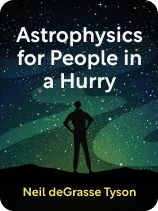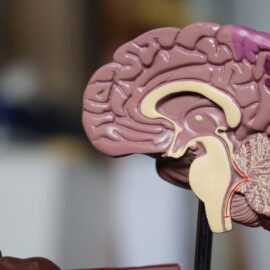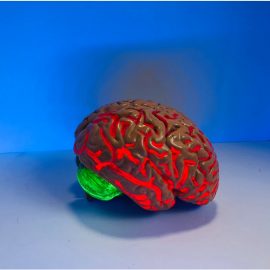

This article is an excerpt from the Shortform book guide to "Astrophysics for People in a Hurry" by Neil de Grasse Tyson. Shortform has the world's best summaries and analyses of books you should be reading.
Like this article? Sign up for a free trial here.
What are the basic assumptions of science? What has been confirmed through experiments and observations?
Neil deGrasse Tyson explains that science is universal: we can depend on the laws of nature. Science relies on certain assumptions that we’ve made after sufficient experimentation and observation. Still, there’s room for mystery and discovery.
Read more to learn the basic assumptions of science that undergird our understanding of the universe.
The Basic Assumptions of Science
While exploring the universe opens our minds, it’s important to work within the constraints of well-established scientific ways of thinking. Science relies on basic, grounding principles and assumptions that have been confirmed through repeated tests and observations. Tyson explains the basic assumptions of science that lie at the heart of astrophysics—specifically, that science is universal—while also talking about what happens when science meets the unknown and has to be reframed to include new information.
| Science in Flux A layman may ask how science can be believed if its precepts can change and are subject to question. Part of this comes from the fact that science is taught in schools as a collection of facts with only lip service given to the process of discovery and rigorous double-checking of results. It’s more accurate to describe science as a process that helps us zero in on objective reality while systematically eliminating our preconceptions. The process of science and the findings it makes are always subject to refinement and in some cases reevaluation. In The Structure of Scientific Revolutions, Thomas Kuhn explains that science builds upon itself within systems of well-established laws he calls paradigms. A paradigm defines what is already known while governing what types of questions should be asked and what methods scientists use to answer them. Scientific paradigms change over time, but only when new discoveries show that our old ways of thinking are woefully outdated. What makes astrophysics so enticing is that its discoveries have the potential to overturn many of our beliefs about the universe and establish a whole new paradigm of understanding. |
The first general assumption that physicists make is that the same laws of physics apply everywhere in the universe. Tyson writes that, so far as we can see, every observation we make in space confirms this. The rules of gravity that apply here on Earth govern the motion of stars in distant galaxies. The rules of chemistry that we confirm in earth-bound labs hold true when we explore other planets. On Earth, we use the science of spectroscopy to analyze the elements that make up hot gasses—and those exact same atomic fingerprints are found in the light from distant suns.
| Evidence That Physics Is Universal Spectroscopy, the tool by which astronomers can study chemistry in space, provides strong confirmation for the assumption that physical laws are universal. When light passes through a gas, only some of its photons are absorbed. Different elements and molecules absorb photons of specific wavelengths, giving each a unique signature left behind in the light that passes through. Astronomers use spectroscopy to determine the chemical makeup of stars and clouds of interstellar gas, while the spectrometer on the James Webb Space Telescope has found water vapor in the air of a planet over 1000 light-years from Earth. The fact that the same chemical traces are found everywhere in space, and that they react to light the same way no matter how distant they are, shows that the rules governing matter-photon reactions are consistent throughout the universe. |
The second assumption scientists make is that laws of physics don’t change over time. Tyson explains that we can confirm this by looking deeper and deeper into space. Because light takes time to cross the universe, whenever you look at an object in the sky, you’re seeing into the past. When you look at the sun, you see it as it was eight minutes ago. When you look at the Andromeda Galaxy through a telescope, you’re seeing light that’s 2.5 million years old. With our newest telescopes, we can look billions of years into the past, and we can see that the rules of gravity, chemistry, and relativity were just as true back then as they are in our world today.
This may make it sound like physics has all the answers, but Tyson points out that isn’t the case. A true law of nature is universal, but that doesn’t mean that we fully understand it. We can say that we’re sure of established laws of physics with a certain degree of confidence as a result of rigorous and repeated observations. However, there are things going on in the universe that science has yet to explain.
| How Do You Question the Laws of Physics? If there’s one lesson to be learned from the last few centuries of scientific progress, it’s that every now and then you need to test your own assumptions. Even the universal nature of physical laws isn’t exempt from this mandate. For example, researchers at Swinburne University have conducted experiments to determine whether a specific physical constant is the same in distant galaxies as when measured here on Earth. Their results were surprising. When looking at light from very distant galaxies using Hawaii’s Keck Observatory, they found evidence that the “fine structure constant,” a numerical value that dictates how light and electrons interact, was smaller in the past than it is in the present. However, when using Chile’s Very Large Telescope, they discovered evidence that the fine structure constant was larger when looking in a different direction in the sky. Their results throw into question the idea that physical laws are immutable across time and space, but the researchers admit that it’s far too early to accept their results at face value. Citing Carl Sagan’s famous saying that “extraordinary claims require extraordinary evidence,” the scientists at Swinburne University recommend that others attempt to verify their findings and determine any systematic errors that might explain their results. |
Tyson says there’s plenty of precedent for reevaluating our knowledge in the face of the unknown. For example, Isaac Newton’s laws of motion and gravitation went unchallenged for hundreds of years, until observations and new scientific methods showed that Newton’s laws couldn’t accurately describe the behavior of extremely high-mass objects or things moving near the speed of light. That’s not to say that Newton was wrong (his equations for gravity work just fine for navigating spacecraft around the solar system), but Albert Einstein’s theory of general relativity showed that Newton’s laws were merely incomplete. Scientists recognize that our best current theories are still close approximations of nature, to be added to and refined as needed.
| Newton and Einstein on Motion Most students learn Newton’s Three Laws of Motion in grade school. They are: 1. An object in motion will remain in motion, and an object at rest will remain at rest unless acted upon by an outside force. 2. The amount of force needed to accelerate an object depends on the object’s mass. 3. Every action has an equal and opposite reaction. Newton’s laws passed every test for centuries, except when it came to the behavior of light. To solve the riddle of light’s behavior, Einstein devised the theory of special relativity that described a more complicated relationship between light, energy, and mass. Within Einstein’s equations, Newton’s laws still hold true for objects in the same inertial frame of reference that are moving much slower than light. In other words, our everyday world. |
Scientists regularly debate their hypotheses, but only on the questions that science hasn’t solved. Our confidence in scientific laws that have been confirmed by experiments and repeated observation is very high. In that sense, according to Tyson, astrophysics is easy compared to fields like politics and sociology. In physics, when an argument runs into the wall of a well-established theory, that argument ends unless some dramatic observation suggests that a known law of physics is wrong.
| Overturning Science How dramatic does an observation have to be to call a deeply held theory into question? The first step involves putting the observation itself under rigorous testing to see if it can be repeated. For instance, in 1989, two chemists announced that they’d been able to achieve hydrogen fusion at room temperature, which if true would have revolutionized particle physics and the energy industry. When no other scientist was able to reproduce their results, it was revealed that their methodology had been flawed, and their observations were incorrect. When many observations made over time fail to match a well-accepted theory, then it grows more clear that a change is in order, such as in the case of Johannes Kepler, who solved the riddle of planetary motion. At the time, astronomers assumed that the planets traveled in perfectly circular orbits. However, no models based on that theory could explain the actual observations of how the planets moved. It was only when Kepler threw out the “circular orbit” theory that he discovered that planetary orbits are elliptical. Kepler’s system not only explained previous observations of planetary motion but was able to accurately predict future observations, laying the groundwork for Newton’s theory of gravity. |

———End of Preview———
Like what you just read? Read the rest of the world's best book summary and analysis of Neil de Grasse Tyson's "Astrophysics for People in a Hurry" at Shortform.
Here's what you'll find in our full Astrophysics for People in a Hurry summary:
- Neil deGrasse Tyson's simple explanations of some of the mysteries of the cosmos
- Why everyone should understand where we fit in the universal scheme
- Why humans need to climb off their pedestals






